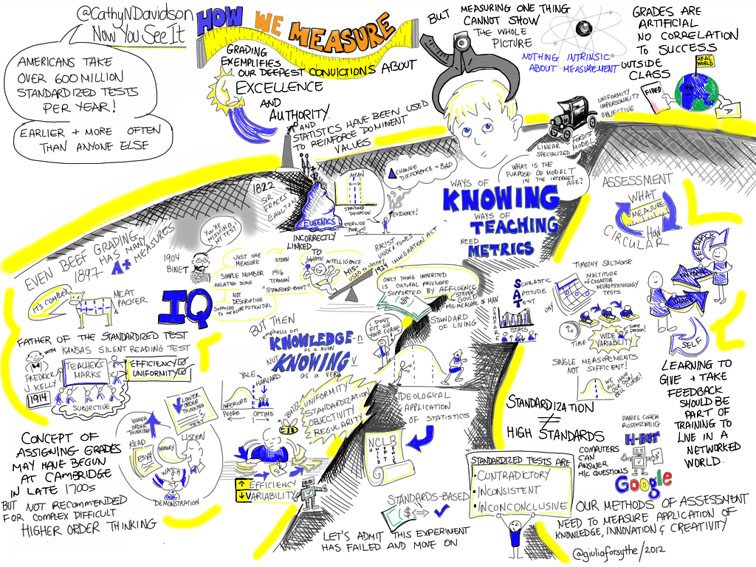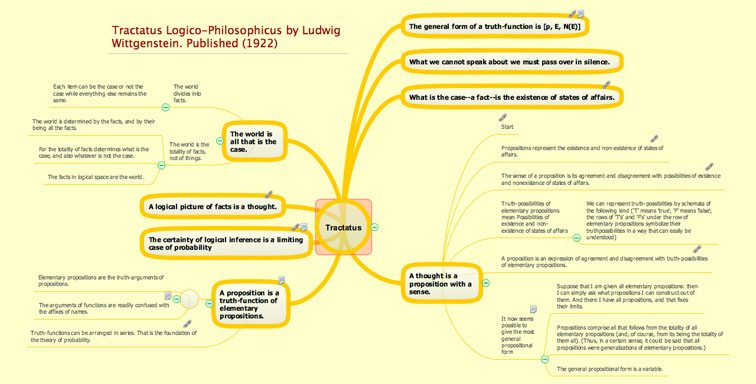Mind-Mapping And The Digitization Of Learning
by Olin Reams, General Manager, ConceptDraw.com
Digitization has been a disruptive force across the board, leveraging existing technologies and taking them to new levels and unprecedented speeds. Like healthcare, finance, and other industries, higher education is evolving and is increasingly digital; today’s students can download notes from the cloud and turn in assignments via email. While new technology has in many ways made education simpler and faster, it has also institutionalized constraints and made impractical settings the standard.
My thesis is that some education software can fail in its task because it does not store, organize, and communicate knowledge more effectively than non-digital means. However, I believe digital mind mapping applications now surpass their pen and paper predecessors when used to their full extent.
The efficacy of mind-mapping is well-understood and tested yearly in worldwide studies. For students and educators, the real question is: How can mind mapping make the academic world more efficient and more productive? How can the education world leverage mind-mapping software to ‘hack’ the retention, organization and distribution of knowledge?
The most powerful and collaborative uses of mind-mapping have gone unnoticed largely because academia is still transitioning to digital and fending off pointless software. Hand-written note-taking, physical folders, note cards, penned lecture outlines and projector slides are still common in the classroom. My goal here is not to discredit these approaches, as we know well that they have produced remarkable thinkers and educators.
Rather, I would argue that mind-mapping software opens up new frontiers for storing, organizing and communicating knowledge. Here’s how:
Note the Difference
Every student who has taken a psychology class or gone to a study skills session knows one thing: they have been taking notes the wrong way.
While I would encourage students to learn about new and different styles of note-taking, in the end students need to develop their own personal style.
That is where mind mapping provides such an advantage. We know that lectures are often non-linear. Professors have a tendency to leave and revisit key ideas, take tangents and generally enhance (or confuse) the lecture experience by steering in and out of the main topic.
Linear note taking applications are not designed for this experience because they insist on chronological organization of ideas.
Pens and paper have always provided a customizable note taking experience, but one that is constrained by physical paper space and the readability of handwriting. Mind mapping, however, lets students take in information in their own way without page constraints. Students can also reorganize that knowledge by clicking and dragging rather than re-writing notes. In preparation for exams, this ability to reorganize, deepen and clarify existing webs of knowledge is a distinct advantage.
In the retention of knowledge, software is an upgrade over pen, paper and word processors. When students have to prepare for exams, the benefits of mind mapping will shine through.
For both students and researchers, there is no ‘gold standard’ for organizing and deploying research into an effective outlines for lectures and papers. Generation Y, X, and the Baby Boomers grew up hearing their social studies and history teachers tell them to take down all their research on index cards. Hopefully, we now know better.
Any research organization method that illuminates and maintains links between arguments or hypothesis, evidence, and their connection to the overall thesis provides a resounding advantage over written notes. Index cards, even when they are marked well, tend to silo information.
With mind mapping applications, researchers could write out their thesis in a central bubble, link sub arguments (i.e. sections of the paper) to the main section and scale down to the most specific supporting arguments. By then attaching links, PDFs, Excel spreadsheets, and other forms of citable evidence, the researcher builds a living, easily modifiable outline that includes both the structure and substance of the paper.
The best mind mapping applications now let students and researchers share their ideas and receive feedback in unprecedented ways. The lecturer preparing for his class or the researcher on her way to a conference can now export mind maps to PowerPoint in one click. The PhD student in India for his dissertation research can present the mind-map directly to his advisor back in the United States via Skype. The diehard Evernote user can clip mind maps to the application with the push of a single button.
Whereas note cards might take knowledge and make it available for outlining and presentation, mind mapping software now takes knowledge and makes it into that outline or presentation on the road to a final product.
Clear Collaboration
Collaboration is a beloved buzzword in business and education. Businesses want employees viewing and improving the same documents and spreadsheets. Higher education wants students to lift their heads up from the smartphone and interact directly with their peers on challenging projects. Professors from different universities and countries want to collaborate on substantive work. Mind mapping is one way to meet this goal.
We know Dropbox has succeeded at providing a central, continually updated repository of the files groups and organizations need. So think of shared mind maps then as a central, continually updated representation of the substance and purpose of the information in those Dropbox files.
For a team, a mind map is one central location with concepts, research plans, responsibilities, due dates, updates and a continually evolving body of knowledge that students or researchers can use to achieve their goals.
Students see each other in class, but researchers from the United States and Japan collaborating on the same project do not have that advantage. Their ability to store, organize and communicate their knowledge will be critical.
Resistance to digitization in higher education is rapidly subsiding as students and professors find and use software that actually improves their efficiency and productivity. The new wave of education software, such as mind map software, will streamline the key challenges of retaining, organizing, and sharing knowledge.
Mind-Mapping And The Digitization Of Learning



